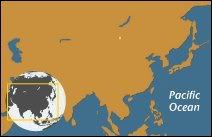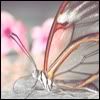|
|
Horse
Apr 14, 2009 18:36:18 GMT -5
Post by Revenge on Apr 14, 2009 18:36:18 GMT -5
Horses
All Shapes and Sizes: Horses come in all shapes, colors and sizes. The equidae family describes your typical barnyard horse, but also includes asses, onagers and zebras.
A Horse is a Horse: According to Animal, in a list compiled by the Smithsonian Institution, what makes a horse a horse is its "deep chest, a mane on the neck, tufted or long-haired, tail, a solid hoof on each foot, thickened skin (called chestnuts) on the inside of the front legs above the knee, and mobile lips and nostrils." Horses also possess great endurance and speed. The fastest equidae is the onager, an Asian wild ass that can clock speeds in excess of 40 mph.
Gorging on Greens: Horses are vegetarian. They get most of their nutrients from grasses and their teeth are specially designed for grazing. A 1,000-pound horse typically will ingest between 15 and 25 pounds of food per day. The horse's digestive track is equipped to handle this large amount of roughage. Its stomach is small, but the intestines are very long, allowing the constant stream of nutrients to be easily digested.
Wild No More?: Where once wild horses galloped across open plains, they are endangered today due to habitat loss.
Wild, Wild Horses: There's a difference between true wild horses and feral horses. True wild horses, like the Przewalski's horse, were never domesticated; feral horses, like mustangs, are descended from domestic stock.
DID YOU KNOW?
Wild Names: Feral horses are known by different names across the world. In the American West, they're called mustangs; in Australia, they're known as brumbies; in Spain, they're called Sorraia.
American Extinction: Horses were once indigenous to North America. They died out at the end of the last Ice Age. It's unclear why, but it's possible they were hunted to extinction by newly-arrived humans.
Sleep Standing Up: Horses can sleep standing up or lying down; they sleep about 2½ hours a day in 15 minute increments. Horses must lie down to reach REM sleep every few days. |
|
|
|
Horse
Apr 14, 2009 18:52:59 GMT -5
Post by Revenge on Apr 14, 2009 18:52:59 GMT -5
The Wild Horse
Wild Horse Profile
Horses and humans have an ancient relationship. Asian nomads probably domesticated the first horses some 4,000 years ago, and the animals remained essential to many human societies until the advent of the engine. Horses still hold a place of honor in many cultures, often linked to heroic exploits in war.
There is only one species of domestic horse, but around 400 different breeds that specialize in everything from pulling wagons to racing. All horses are grazers.
While most horses are domestic, others remain wild. Feral horses are the descendents of once-tame animals that have run free for generations. Groups of such horses can be found in many places around the world. North American mustangs, for example, are the descendents of horses brought by Europeans more than 400 years ago.
Wild horses generally gather in groups of 3 to 20 animals. A stallion (mature male) leads the group, which consists of mares (females) and young foals. When young males become colts, at around two years of age, the stallion drives them away. The colts then roam with other young males until they can gather their own band of females.
The Przewalski's horse is the only truly wild horse whose ancestors were never domesticated. Ironically, this stocky, sturdy animal exists today only in captivity. The last wild Przewalski's horse was seen in Mongolia in 1968.
Wild Horse Range (In the yellow)
Fast Facts
Type: Mammal
Diet: Herbivore
Size: Height at the shoulders, 30 to 69 in (76 to 175 cm)
Weight: 120 to 2,200 lbs (54 to 998 kg)
Size relative to a 6-ft (2-m) man
|
|
|
|
Horse
Apr 14, 2009 19:02:28 GMT -5
Post by Revenge on Apr 14, 2009 19:02:28 GMT -5
The Przewalski Horse
Przewalski's Horse Profile
Przewalski's horses are the last surviving subspecies of wild horse. First described scientifically in the late 19th century by Russian explorer N. M. Przewalski, for whom the horse is named, the horse once freely roamed the steppe along the Mongolia-China border. Never again seen in the wild, Przewalski’s horses have since been kept and bred in captivity and have recently been reintroduced in Mongolia.
With a short, muscular body, Przewalski’s horses are smaller than most domesticated horses. They have a pale belly and beige to reddish-brown coat that is short during summer and thicker and longer in winter. Their muzzle is white, and they don an erect and dark mane that lines their large head and neck. They stand about 12 to 14 hands tall at the shoulder, or about 48 to 56 inches (122 to 142 centimeters), and weigh about 440 to 750 pounds (200 to 340 kilograms).
While extant in the wild, these horses ate grasses and other vegetation on the steppe, shrublands, and plains of western Mongolia and northern China. Herds observed at reintroduction sites appear to be affectionate. Females, or mares, and foals live in family groups with a dominant stallion, while younger males live in bachelor groups. Mares give birth to a single foal after an 11- to 12-month pregnancy.
Considered a wild subspecies because its ancestors were never domesticated, the extinction in the wild of the Przewalski’s horse was due primarily to interbreeding with other domesticated horses. About 1,500 exist today, a large number living in zoos, but many also making up herds that have been reintroduced at several sites in Mongolia.
While their greatest threats today include a loss of genetic diversity, their extinction in the wild was also brought on by hunting, loss of habitat, and loss of water sources to domestic animals.
Przewalski Horse Range (In the yellow)
Type: Mammal
Diet: Omnivore
Average lifespan in captivity: About 20 years
Size: Height at the shoulders 48 to 56 in (122 to 142 cm)
Weight: 440 to 750 lbs (200 to 340 kg)
Group name: Herd
Protection status: Endangered
Size relative to a 6-ft (2-m) man
|
|
|
|
Horse
Apr 14, 2009 19:03:14 GMT -5
Post by Revenge on Apr 14, 2009 19:03:14 GMT -5
|
|








